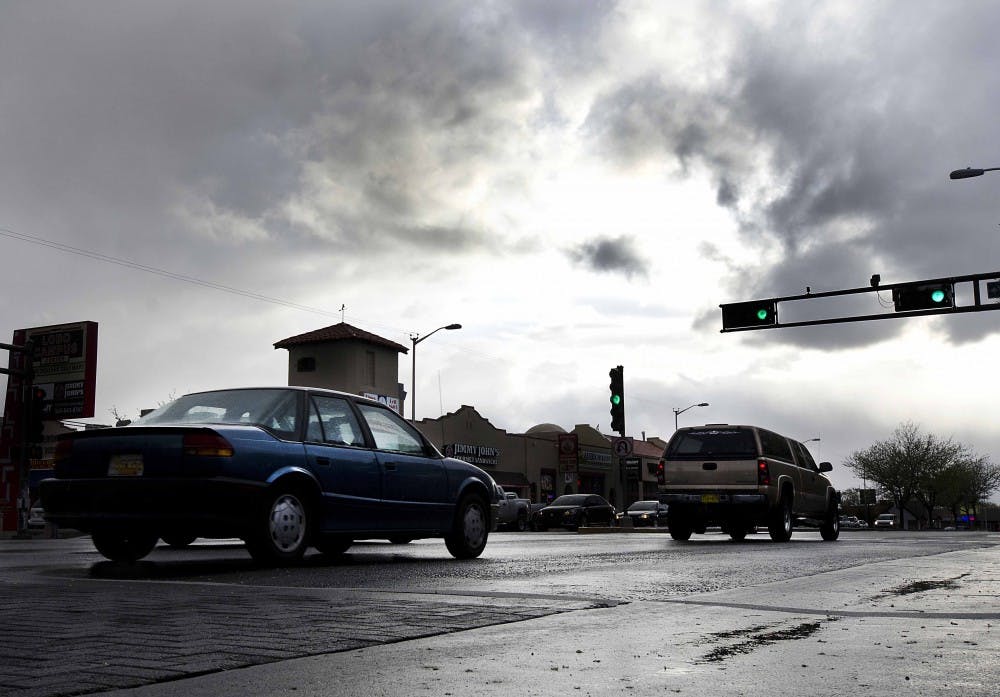A partnership between the city of Albuquerque and UNM could help alleviate heavy traffic that students face getting to school.
UNM along with Albuquerque, the Federal Transit Administration and the Federal Highway Administration is researching a solution to growing traffic in the areas around UNM, CNM and the Albuquerque International Sunport. In 2010, the partnership began assessing the transportation impact on the University Heights area.
Tony Sylvester, special projects planner for Mid-region Council of Governments, said the project ideas range from building new roads to adjusting class times to decrease traffic in the area.
“For all the institutions, neighborhoods and businesses in the area, the ability for people to get to and from the homes, classes, jobs or the health care services is essential,” he said.
“This project will help us look into the future and address some of these transportation-related issues and maintain and potentially improve accessibility to all these different destinations.”
Representatives said they are as of yet unsure how much the project will cost.
The research findings of the first phase, which focused on the number of commuters travelling to UNM and CNM each day, helped the coalition obtain an $850,000 grant from the Federal Transit Administration and the Federal Highway Administration to fund the second phase. Sylvester said some money will go toward planning and research, and some may go toward improving public transit in the area.
The next step of the project, which deals with transit recommendations, began in March and will be finished in 18-24 months, Sylvester said.
According to research conducted during the first phase the UNM, CNM and Sunport area is the most visited region in the entire state. PATS Program Specialist Danielle Gilliam said 74,000 trips occur daily in this area. In its 2011 annual commuter survey, the UNM Parking and Transportation Services found that 48.7 percent of the 1,291 students surveyed said they drive alone to campus, a 5.4 percent decrease from a 2010 survey of 1,266 students, Gilliam said.
A report developed by MRCOG based on the research from the first phase suggested that UNM and CNM rearrange class schedules to reduce the amount of students on their campuses from 9 a.m. to 3 p.m.
Sylvester said reducing traffic and promoting alternative transportation in the area is key because of the institutions in the vicinity.
“The important thing about this study is that there is a recognition amongst all these parties that this is a unique area,” he said. “The area is important not just for the city, the neighborhood and the individual institutions but also on a statewide level.”
Get content from The Daily Lobo delivered to your inbox
UNM and CNM already encourage students to use alternative modes of transportation including carpooling, biking and riding the bus.
According to the PATS website, students from both universities are eligible to receive free bus passes and a 50 percent discount on New Mexico Rail Runner Express fares. According to PATS surveys, about 45 percent of students use alternative modes of transportation to travel to campus.






